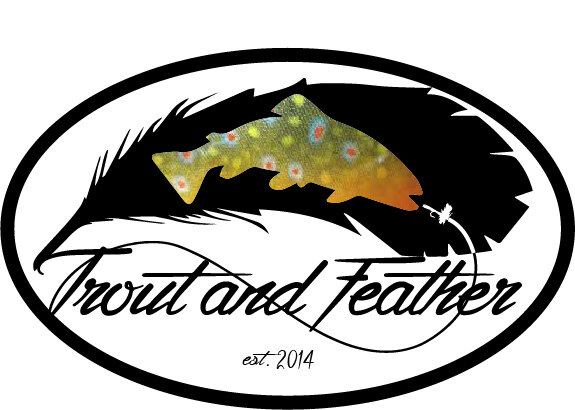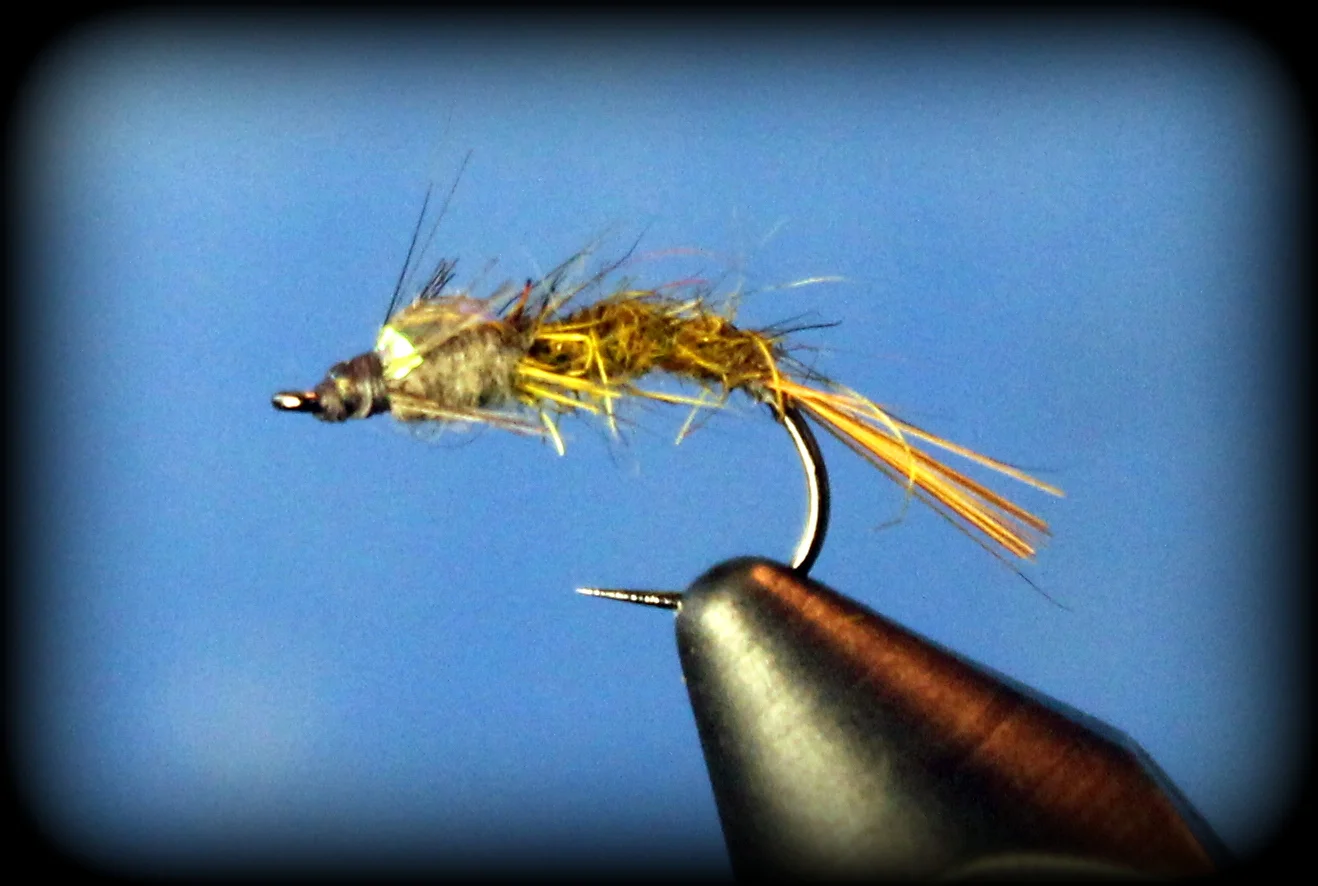Early in my fly fishing years, I learned the effectiveness of emergers by their ability to catch fish before, during, and following the hatch. Emerger patterns are those that represent insects in the stage before they are an adult, and trout have learned to key on this stage. Many times, the insects are vulnerable during the emerger stage, thus making it a great one to imitate when fly fishing. These include some of my favorite flies to fish during important mayfly and caddis hatches, and I recommend them to all of you.

If caddis are present on a river or stream, then this CDC Caddis Pupa is one of my "go-to" flies when fishing subsurface. You can modify the body color to match naturals in your area, and fish this fly below or above others. Depending on the use of a bead, this CDC Caddis Pupa does an excellent job of representing caddis emergers. Fish this one with confidence!

During this fly tying tutorial, I tie the E/C Caddis (emergent / cripple) created by Ralph Cutter. This is a great pattern when fishing over pressured trout, especially in tailwater situations. On those waters, the cold temperatures can slow the emergence, making patterns like this one perfect imitations.
Here are some great resources to learn more about this pattern and to see the color change during a caddis emergence:
http://stevenojai.tripod.com/eccaddis.htm
https://www.youtube.com/watch?v=ZNHIdOYAhZc

Utilizing a dubbing loop to create a "buggier" body, this tutorial shares a favorite fly of many, the Soft Hackle Hare's Ear. This fly most commonly is used to represent the many caddis found in our rivers and streams, and without the bead, can match the emerger stage nicely. During the video, you'll notice that I made slight variations from the original, thus feel free to modify this pattern to match the natural insects in your home waters.

The Partridge and Orange is a traditional soft hackle that still works very effectively today. This pattern is slightly different from others I have on this site, being that I am using a different feather for the hackle. The pattern, utilizing silk thread for a body, can represent many insects, including caddisflies and various mayflies. I like to fish this as a dropper tied above my blood knot connection for the tippet.

Like many others, I enjoy tying and fishing patterns that offer versatility, and the Soft Hackle Pheasant Tail is one that fits that criteria! This simple-to-tie pattern can be fished as a wet fly or an emerger, and with modifications, it can easily be tailored to be a successful pattern in your local waters. In this video, we go over the tying procedures, and then discuss some ways that you can vary the pattern to ensure success on the waterways you fish.

Fishing emergers for technical trout is one of my favorite parts of fly fishing, and this pattern is one many turn to on a regular basis. Created by Tom Rosenbauer of Orvis, the Rabbit's Foot Emerger is an extremely buggy pattern that is simple to tie. Once wet, this fly can imitate both mayflies and caddisflies as they are emerging near the surface. As I stress in this video, don't be afraid to change the colors to imitate the flies in your local waters; this pattern is more of a "base" that can be modified as needed. Good luck with this pattern, especially on those finicky trout!

Gary LaFontaine did an incredible job when creating his Sparkle Emerger, and my variant pays homage to the original. You'll notice some "modern" materials in this fly, hence why it's becoming a "go to" pattern for me during caddis hatches. Additionally, there are some intermediate to advanced fly tying techniques shown in this video, hopefully pushing all of you to be better tyers. Thanks for viewing and I hope you enjoy this Sparkle Emerger Variant.

The Parasol Post is a technique I utilize often for a variety of flies (especially emergers), and it's one I recommend you add to your arsenal. In this video, I share my procedure for tying it and some various tips.

The Parasol Post Pheasant Tail Emerger is a pattern that I've turned to when fly fishing for finicky trout over the years. This fly represents the emerger stage of a mayfly, sitting just under the water's surface. That location signals vulnerability...and the trout respond! Have fun with this one...

Thanks go out to Dave Allison for sharing the Film Critic with all of us. This Bob Quigley emerger has fooled a lot of fish over the years, and Dave's techniques and tips are excellent. Thank you, Dave, and I hope to have you on again in the future!

This is an effective caddis that utilizes Hungarian Partridge fibers for legs. The Bird of Prey Caddis is intended to represent both the caddis pupa and emerger stages, and variations are discussed in this tutorial. When John Anderson created this pattern, he kept everything simple, easily one of the reasons this fly works so well!

The Partridge and Orange is a traditional soft hackle that still works very effectively today. The pattern, utilizing silk thread for a body, can represent many insects, including caddisflies and various mayflies. I like to fish this as a dropper tied above my blood knot connection for the tippet.

Categorized as a "guide fly" because it takes such a short amount of time to tie this pattern, the Sulphur Soft Hackle is an effective fly to catch trout on during a hatch. I recommend fishing this pattern with a split shot at the beginning of the hatch, eventually drying it and fishing the Sulphur Soft Hackle on the surface as the fish begin to feed on emergers and duns. This is also a great fly to swing, with great strikes from fish!

The Barr Emerger, create by John Barr, is an effective pattern that I use prior to the full emergence during a hatch. This specific fly is meant to imitate the Baetis, or Blue-Winged Olive (BWO), and you can vary the colors to represent other mayflies during their emergence.

This simple pattern, developed by Craig Mathews of Blue Ribbon Flies, does an excellent job representing the emerger stage of caddisflies, primarily due to the trailing shuck. This can also represent a crippled caddis, thus making it an effective fly to fish throughout a caddis emergence.

During a hatch of Sulphur mayflies, a great fly to fish is an emerger, which sits in the film. By tying this pattern parachute-style, the fly rests within that surface film, plus the addition of a trailing shuck gives the fish something to key on during the Sulphur occurrence.

One of my favorite flies to fish during the Sulphur mayfly hatch is the Comparadun, Craig Mathews' fly takes it one step further by adding a trailing shuck for the tail. That addition makes the Sulphur Sparkle Dun a perfect emerger during the hatch, plus with the splayed deer hair, a pattern that I will fish even as the spinners fall due to it representing spent wings from the underside.

This unique pattern is one that has become popular in the western United States, but hopefully makes its way to the East. The Clown Shoe Caddis is a fly whose body sits in the surface film, representing an emerging caddis. The fly has lots of visibility, thus easy to see when fishing even at a distance. Jay Zimmerman created this great pattern, and I recommend that everyone unfamiliar with it give the pattern a try during the next caddis occurrence.

How can you go wrong with one of Patagonia's Yvon Chouinard's favorite flies? This soft hackle, developed by Nick Nicklas from Blue Ribbon Flies, has some great materials that, when combined, prove to be very effective on trout. In this tutorial, the pattern is tied to mimic the Slate Drake, though the Shakey Beeley can be modified to match the natural fly of your choice.


In this fly tying tutorial, we welcome guest tier Devin Olsen of Tactical Fly Fisher. Devin is an accomplished fly fisherman and tier, plus a current member of Fly Fishing Team USA. Devin shares his Pliva Shuttlecock, a pattern that has caught many finicky fish for him, including at the World Fly Fishing Championships.